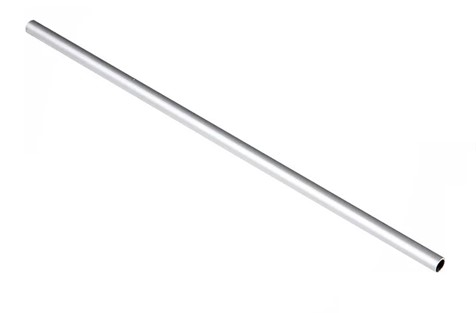Current Situation in US Pork Production: Analysis and Forecasts

Of the total hogs and piglets, 68.5 million are commercial hogs and 5.98 million are kept for breeding. Interestingly, despite the overall decline in the herd, the number of piglets weaned per litter has increased. Between December 2024 and February 2025, 33.7 million hogs were weaned on U.S. farms , down 0.2% from the same period last year. However, the average number of piglets per sow per litter increased to 11.65, up 1% from last year (11.53 piglets).
Hog Producer Plans
U.S. hog producers are active in their farrowing plans. They plan to farrow 2.91 million sows between March and May 2025 and 2.96 million sows between June and August. This shows that despite the current decline in the herd, producers are confident in the future and plan to increase pork production.
Regional characteristics
The largest hog population is concentrated in a few key states. The leader in hog production is Iowa, where there are 24.3 million heads. Minnesota is second with 9.2 million heads, and North Carolina is third with 8.1 million heads. These regions occupy an important place in the pork supply chain, and their performance directly affects the market as a whole.
Forecasts and challenges
Given the current trends, it can be expected that producers will strive to optimize their processes to cope with the challenges associated with the decline in the herd. An important aspect will be the introduction of modern technologies in pig production, which will increase productivity and improve animal HEALTH . In addition, disease resistance and improved genetics of pigs will play a key role in the future development of the industry.
Overall, despite current challenges, the U.S. pork industry remains an important part of the agricultural sector, and producers are working to ensure a stable supply of pork in domestic and international markets.
Read together with it:
- Парагвай: Экспорт субпродуктов является растущей отраслью и уже достиг 95,4 млн долларов СШАЭкспорт говяжьих субпродуктов в этом году значительно вырос. К концу августа выручка составила 95,4 млн долларов США по сравнению с 54,6 млн долларов США на тот же конец прошлого года. По данным SENACSA, в конце августа этого года было экспортировано 51 миллион килограммов мяса по сравнению с 33,7 миллиона килограммов на конец того же месяца прошлого года. Экспорт субпродуктов увеличился на 51,3%....
- Министерство сельского хозяйства США представило план по снижению цен на говядинуПоголовье скота в стране находится на самом низком уровне за последние 75 лет, в то время как спрос на говядину вырос на 9% за последнее десятилетие. Поскольку увеличение поголовья скота в стране требует времени, Министерство сельского хозяйства США (USDA) уже сейчас инвестирует средства, чтобы сделать эти рынки менее волатильными для скотоводов в долгосрочной перспективе и более доступными для по...
- В Кремле пообещали ответ на санкции сообразно интересам РоссииДмитрий Песков В Кремле начали анализировать введенные санкции для разработки ответных мер, заявил пресс-секретарь президента России Дмитрий Песков, передает корреспондент РБК. «В настоящий момент анализируются те санкции, которые определены. Будем делать то, что наилучшим образом соответствует нашим интересам», — сообщил Песков, отвечая на вопрос об ответных мерах России. 19-й пакет санкции Еврос...
- США ввели санкции против президента КолумбииПрезидент Колумбии, его жена и старший сын, а также глава колумбийского МВД попали под санкции США из-за трафика наркотиков из Колумбии в Штаты. Бессент обвинил Петро в отказе пресечь деятельность наркокартелей Густаво Петро Минфин США ввел санкции против президента Колумбии Густаво Петро, сообщается на сайте ведомства. «Президент Петро позволил наркокартелям процветать и отказался пресечь их деят...
- Чего ожидать от «одной из самых рискованных» поездок ТрампаДональд Трамп начал турне по Азии, в ходе которого встретится с лидерами ключевых стран, включая Си Цзиньпина. Почему эта поездка может оказаться сложнее, чем недавние визиты в Европу и на Ближний Восток — в статье РБК Дональд Трамп Какие встречи запланированы в ходе турне Президент США Дональд Трамп вылетел из Вашингтона поздним вечером в пятницу, 24 октября, и утром в субботу его борт приземлитс...
- С начала года Московская область увеличила экспорт свинины на 35% в стоимостном выраженииМосковская область продолжает укреплять позиции одного из ведущих экспортеров продукции агропромышленного комплекса в России. По итогам 9 месяцев с начала года регион нарастил экспорт свинины на 35% по стоимости. В натуральном выражении объем поставок составил 85 тысяч тонн, что на 17% больше, чем за аналогичный период прошлого года. В Министерстве сельского хозяйства и продовольствия Московской о...
- В Татарстане за 9 месяцев 2025 года произведено 314 тыс. тонн мяса скота и птицы, надоено 1 млн 405 тыс. тонн молокаВ Республике Татарстан на сегодня выкопано 42 тыс. га площадей сахарной свеклы, это 79% от плана. Накопано свыше 2 млн. тонн корнеплодов со средней урожайностью 490 ц/га. Сахарными заводами заготовлено 667 тыс. тонн, переработано 593 тыс. тонн сырья, выработано 82 тыс. тонн сахара. Такие данные привел заместитель Премьер-министра РТ – министр сельского хозяйства и продовольствия РТ Марат Зяббаров ...
- Московская область демонстрирует рост урожая зерновых, картофеля и овощей в 2025 годуВ Московской области отмечается положительная динамика по валовому сбору ключевых сельскохозяйственных культур. Значительно увеличены показатели по зерновым и зернобобовым, картофелю и овощам. В Министерстве сельского хозяйства и продовольствия Московской области сообщают, что валовой сбор зерновых и зернобобовых культур составил 592,2 тыс. тонн, что на 89,9 тыс. тонн или 18% превышает показатель ...





























































